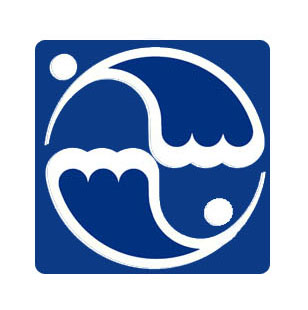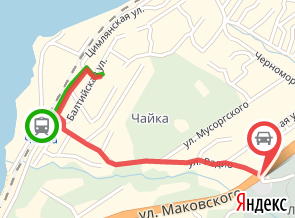|
Subdivision
Science degree
Ph.D.
|
Research results were included into National Report for IAPSO, IUGG, 2011–2014. Geoinf. Res. Papers. N. 3. BS3009. Moscow, GCRAS Publ., 2015. P. 27-29. doi:10.2205/2015IUGG-RU-IAPSO.
I. Basing on satellite altimetry measurements, regularities of the variability of sea level, water circulation, and energy of synoptic processes in the Sea of Japan were identified and statistically substantiated:
- The quasi-decade-long fluctuation of the Sea of Japan level in the entire water area includes an increase in 1995-2000 and 2008-2013 (positive phases) and a decrease in 2001-2007 (negative phase). The positive phase of 1995-2000 correlates with the trend of increasing of the water flow entering the Sea of Japan through the Korea (Tsushima) Strait, and with the negative – with the trend of decreasing of the flow. If the linear trends of the Sea of Japan level for 1993-2015 are close to the average for the World Ocean (+3.4 mm/year), then in the positive phases they are significantly higher, +12.9 and +7.1 mm/year in 1995-2000 and 2008-2013, respectively. In contrast, during the negative phase in the subtropical part of the sea, trends are negative, averaging -6.4 mm / year. The most significant trends, both positive (10-20 mm/year or more) and negative (up to -20 mm/year), were registered over the Western part of the Yamato basin and in the area of Ulleungdo island in the subtropical part of the sea, which can be associated with changes in water heat content due to dynamic processes of synoptic and meso-scales. When eliminating the annual course and intra-annual variability, trends are in average 2.5 times lower. This means that about 70% of the trends are related to annual changes in the nature, i.e. the East Asian monsoon system.
- Quasi-two-year fluctuations in the Sea of Japan level were registered, that are in phase throughout the entire water area, including the subtropical and subarctic zones. In the subarctic part of the sea, where the registration of dynamic structures of synoptic scale is difficult due to their small size and lifetime, an area to the East of Primorye coast is identified, where their intensity varies significantly on quasi-two-year and 4-5-year time scales.
- In the course of the year, dynamic processes of synoptic scale in the Sea of Japan intensify simultaneously with large – scale currents from April to October, reaching the highest development in October – November, and the opposite changes occur from November to March, with a seasonal minimum observed in March-April. The energy of synoptic processes is concentrated in areas of significant sea depth gradients and jet streams, which, taking into account the common-phase annual course, indicates a significant contribution of barotropic (shear) instability.
- Advection of warm waters from the Korean Strait to the North, occurring in the Western and Eastern parts of the Sea of Japan, covers both subtropical and subarctic zones, up to the Russian coast. This process is characterized by semi-annual, annual, quasi-two-year and 5-6-year variability, and in those periods when advection intensifies in the Western part of the sea of Japan, it weakens along the Eastern coast of the sea and vice versa.
II. According to daily fields based on satellite, r/v and buoy data, large-scale variability in surface temperature of the Sea of Japan, associated with changes in water circulation and consistent with sea level variability, was revealed.
III. According to satellite scatterometry data for 1999-2009, the six – month variability of wind shear stress vorticity over the Sea of Japan was revealed: cyclonic vorticity prevails in winter and late summer, and anticyclonic vorticity prevails in autumn and late winter – early spring. On the basis of multidimensional data analysis, regularities of seasonal variations in the winds over the Sea of Japan were based: predominant during the winter monsoon North-West wind is replaced by the average Western and South-Western winds with the change of the monsoon in the spring, South and South-East winds in mid-summer and again North-West wind by mid-autumn, although, during periods of summer monsoon and the change of the monsoon, abrupt intraseasonal changes (on the scales more than atmospheric synoptic) of the wind direction that interrupts the average annual course.
IV. Based on the numerical multi-layer hydrodynamic model, developed By N. B. Shapiro and E. N. Mikhailova, Marine Hydrophysical Institute of RAS, significant features of the water circulation in the Sea of Japan were identified:
- Under the influence of anticyclonic vorticity of wind stress, the East Korea Current intensifies, the Western section of the subarctic front occupies a Northern position, and its North-Western part, which develops during the initial period of the winter monsoon in the area of the Southern Primorye – North Korea, persists until the end of spring and early summer. Under the influence of cyclonic vorticity, an intense cyclonic circulation develops throughout the Northwestern part of the sea, the Western section of the subarctic front occupies a Southern position, and the East Korea Current weakens. During the bifurcation of the Tsushima current in the area to the West of Hokkaido, the Northern branch is strengthened under the influence of anticyclonic wind vorticity, and the Western branch is strengthened under the influence of cyclonic vorticity.
- An Important factor in the variability of the East Korea Current (the Western boundary current of the Sea of Japan) is its non-linearity, which affects the regime of the inertial-viscous Western boundary layer, according to theoretical results (Kamenkovich, 1966). When the speed increases and the nonlinearity increase in the end of the warm period of the year, a coastal cyclonic sublayer of the boundary layer develops, the current cyclonically meanders and moves from the coast southerly, than in spring and early summer.
- Deep currents throughout the Sea of Japan, and in subarctic areas cyclonic circulations in the entire water column from the surface to the bottom are the more intense, the less developed anticyclonic circulation of pycnocline waters in the Western part of the sea. The circulation in the pycnocline, in turn, is weakened under the influence of cyclonic vorticity of wind stress and a decrease of water flow in the Korea Strait and is intensified under opposite influences, i.e. wind and thermal factors indirectly affect the deep circulation through the redistribution of water masses in the pycnocline. At the same time, the impact of wind is significant not only in the cold, but also in the warm period of year. In winter, the currents of the subarctic part of the sea are barotropic due to their strengthening in intermediate and deep waters, and in the warm season they acquire a baroclinic character, increasing in near-surface waters and weakening below 100-150 m. In the subtropical part of the sea, where the circulation of pycnocline and abyssal waters is significantly different, deep anticyclonic vortices develop over uplifts and seamounts, and cyclonic vortices develop over depressions of the bottom relief. However, when the anticyclonic circulation of pycnocline waters intensifies, the deep currents may change to the opposite direction, as observed by Argo buoys (Park, Kim, 2013). Adaptation of deep currents occurs within one to two months after the change of currents in the pycnocline.
- Трусенкова О.О. Долгосрочные изменения уровня Японского моря по данным спутниковых альтиметрических измерений // Исследование Земли из космоса. 2018. № 2. С. 38–47.
- Трусенкова О.О. Моделирование глубинных течений Японского моря: взаимосвязь с течениями в пикноклине // Изв. ТИНРО. 2018. Т 192. С. 184-201.
- Трусенкова О.О., Лазарюк А.Ю., Островский А.Г., Лобанов В.Б., Каплуненко Д.Д. Короткопериодная изменчивость вертикальной стратификации вод на континентальном склоне в районе залива Петра Великого (Японское море) // Вестник ДВО РАН. 2018. № 1. С. // Вестник ДВО РАН. 2015. № 2. С. 93-100.
- Трусенкова О.О., Митник Л.М. О применении данных спутниковой альтиметрии к исследованию изменчивости уровня воды в озере Ханка // Трансграничное озеро Ханка: причины повышения уровня воды и экологические угрозы. Владивосток, Дальнаука, 2016. С. 89-94.
- Лобанов В.Б., Данченков М.А., Лучин Е.В., Мезенцева Л.И., Пономарев В.И., Соколов О.В., Трусенкова О.О., Устинова Е.И., Ушакова Р.Н., Хен Г.В. Раздел 5.4. Дальневосточные моря России // Второй оценочный доклад Росгидромета об изменениях климата и их последствиях на территории Российской Федерации. М.: Росгидромет, 2014. С. 684-743.
- Трусенкова О.О. Оценка изменчивости вихревой кинетической энергии в Японском море по данным спутниковой альтиметрии // Океанология. 2014. Т. 54. № 1. С. 12-21.
- Трусенкова О.О., Каплуненко Д.Д. Оценка мод изменчивости уровня Японского моря по данным спутниковой альтиметрии // Океанология. 2013. Т. 53. № 3. С. 347-356.
- Трусенкова О.О. Оценка короткопериодных колебаний температуры поверхности Японского моря по спутниковым данным // Современные проблемы дистанционного зондирования Земли из космоса. 2013. Т. 10. № 3. С. 208-216.
- Трусенкова О.О., Каплуненко Д.Д. Моделирование крупномасштабных аномалий температуры поверхности Японского моря, обусловленных динамическими процессами // Океанологические исследования дальневосточных морей и северо-западной части Тихого океана: в 2 кн. / гл. ред. В.А. Акуличев; ТОИ ДВО РАН. Владивосток: Дальнаука, 2013. Кн. 1. С. 37-51.
- Трусенкова О.О. Моделирование региональных особенностей циркуляции Японского моря под различным внешним воздействием // Изв. ТИНРО. 2012. Т. 169. С. 118-133.
- Trusenkova O., Kaplunenko D., Gulenko T., Trusenkov S., Lobanov V., Ishida H.. Sea level variability in the Japan/East Sea, estimated from AVISO altimetry // Pacific Oceanography. 2010. V. 5. N. 1. P. 30-42.
- Trusenkova O.O., Nikitin A.A., Lobanov V.B. Circulation features in the Japan/East Sea related to statistically obtained wind patterns in the warm season // J. Mar. Sys. 2009. V. 78. N. 2. Р. 214-225.
- Trusenkova O., Kaplunenko D., Lobanov V. Dynamically induced anomalies of the Ja-pan/East Sea surface temperature // Ocean Polar Res. 2009. V. 31. N. 1. P. 11-29.
- Трусенкова О.О., Лобанов В.Б., Каплуненко Д.Д. Изменчивость температуры поверхности Японского моря и ее связь с полем завихренности ветра // Изв. РАН. Физ. атм. и океана. 2008. Т. 44. № 4. С. 553-566.
- Трусенкова О.О., Станичный С.С., Ратнер Ю.Б. Основные моды изменчивости и типовые поля ветра над Японским морем и прилегающими районами суши // Изв. РАН. Физ. атм. и океана. 2007. Т. 43. № 5. С. 688-703.
- Трусенкова О.О. Сезонные и межгодовые изменения циркуляции вод Японского моря // Дальневосточные моря России: в 4 кн. / гл. ред. В. А. Акуличев. Кн. 1: Океанологические исследования / отв. ред. В.Б. Лобанов, В.А. Лучин. М.: Наука, 2007. С. 280-306.
- Trusenkova O., Lobanov V., Ishida H. Numerical study of separation of the western boundary current in the Japan Sea // Past, Present, and Future Environments of Pan-Japan Sea Region / Kanazawa University / ed. K. Hayakawa. Tokyo: Maruzen Co., Ltd., 2006. P. 373 385.
- Trusenkova, O., Khrapchenkov F., Ishida H. Mixed layer in the Sea of Japan: numerical simulation and long-term data analysis // Acta Oceanologica Sinica. 2005. V. 24. N 1. P. 77-86.
- Trusenkova O., Ishida H. Seasonal variation of surface and deep currents in the Japan Sea // Doboku Gakkai Ronbunshu. 2005. N. 796/II-72. P. 796_93-796_111. doi.org/10.2208/jscej.2005.796_93.
- Trusenkova O., Ishida H., Ratner Yu., Stanichny S., Ponomarev V. Numerical modeling of heat and freshwater fluxes, temperature, and salinity at the Japan Sea surface // Doboku Gakkai Ronbunshu. 200c. N. 789/II-71. P. 789_125-789_142. doi.org/10.2208/jscej.2005.789_125.
- PICES Annual Meetings, since 2005
- IAPSO Assemblies, since 2003
- PAMS Meetings, since 2001
- PEACE Workshops, since 2004
- WESTPAC Symposia since 1999
- International symposiums on the Sea of Japan, Kanazawa University, Japan, 2004, 2005, 2008
- PACON Symposiums 1999, 2002
- Scientific conferences on Oceanography of Peter the Great Bay and the adjacent part of the Sea of Japan, since 2017
- Climate changes in the ocean
- Synoptical and mesoscale processes in the ocean
- Analysis of observational data using statistical methods in relation to oceanology
- Numerical hydrodynamic modeling of the ocean
- FEB RAS projects, 2004-2014
- "Far East” projects nos. 15-I-1-047m, 2015-2017, № 18-1-010, since 2018 2016-2018, RFBR project № 16-05-00899
- Moscow Institute of Physics and Technology (1979)
- Ph.D. in engineering






